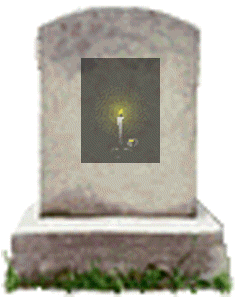 "During 1990 thousands were extra judicially executed" - Amnesty Report
"During 1990 thousands were extra judicially executed" - Amnesty Report
''(During 1990)Thousands of people disappeared or were extra judicially executed in the north-east; many were tortured and then killed in custody. An unknown number of others were detained in the area... Government forces in the northeast were reported to have extra judicially executed thousands of defenceless civilians in areas they had regained... Victims were reportedly shot, bayoneted, stabbed or hacked to death; some were said by witnesses to have been burned alive.
In eastern areas, besides helping the army round up suspects, Muslim Home Guards also reportedly committed extra judicial executions. Victims bodies were regularly left in the open. The identities of many remained unknown; others, presumably killed in custody, were identified as people who had been detained by security forces days earlier. Some had been burned beyond recognition or mutilated.
In Amparai, where the Special Task Force, a police commando unit, was especially active, bodies - some without heads - began to be washed up on the beaches from September. In Amparai District alone at least 3,000 Tamil people were reportedly killed or disappeared between June and October.
In Batticaloa and Vavuniya Districts, as well as in other areas, widespread extra judicial executions were also reported after government troops moved in. Both the security forces and the government refused to acknowledge that many defenceless people had been deliberately killed
... Victims included babies and their mothers, children and elderly men and women. In Batticaloa town alone over 1,200 reportedly disappeared between June and October 1990.
Any person suspected of even minimal contact with the LTTE was at risk of detention, disappearance or extra judicial execution. Members of Tamil and Muslim armed groups which opposed the LTTE helped the security forces to identify LTTE suspects, and in some areas armed cadres of certain Tamil groups were deployed alongside government security forces' - Amnesty International Annual Report, 1991 for the period January to December 1990

Over 6000 Tamil civilians killed by Sri Lanka in the North-East
''In March 1987, the (UN) Commission (on Human Rights) called upon all parties and groups to the conflict (in Sri Lanka) to respect fully the universally accepted rules of humanitarian law and it appealed to the Government of Sri Lanka to intensify its cooperation with the International Committee of the Red Cross in the fields of dissemination and promotion of international humanitarian law. But, four years later,.. the Sri Lanka authorities continue to act in breach of international humanitarian law.
It is reported that, since the renewal of the armed conflict on the 11th of June 1990, over 6000 Tamil civilians have been killed by Sri Lanka in the North-East. Over 4000 have been killed in the East alone - around half this number by Government sponsored Muslim Home Guards. Hundreds of persons 'arrested' by the Sri Lankan authorities have 'disappeared'. Some have been later found dead. Even refugee camps have become targets for army operations. As a result of continued aerial bombardment of civilian population centres and the arbitrary extra judicial killings of Tamil civilians, around one million Tamils have fled their homes and have become displaced persons in their own home lands. Around 200,000 Tamil civilians have fled to South India as refugees.
A de facto blockade, has hampered the international media from reaching the affected areas in the North-East. However the investigation team from the European Parliament which visited the South of Sri Lanka, have estimated that 60,000 Sinhalese were killed by the Sri Lankan authorities during the past 18 months. This provides a chilling indication of the degree of institutionalised violence in the Sri Lankan state and also of the probable scale of its activities in those areas controlled by the government in the North-East. - Statement of the Non Governmental Organisation, Liberation, at 47th Session of the United Nations Commission on Human Rights at Geneva, 28 January 1991